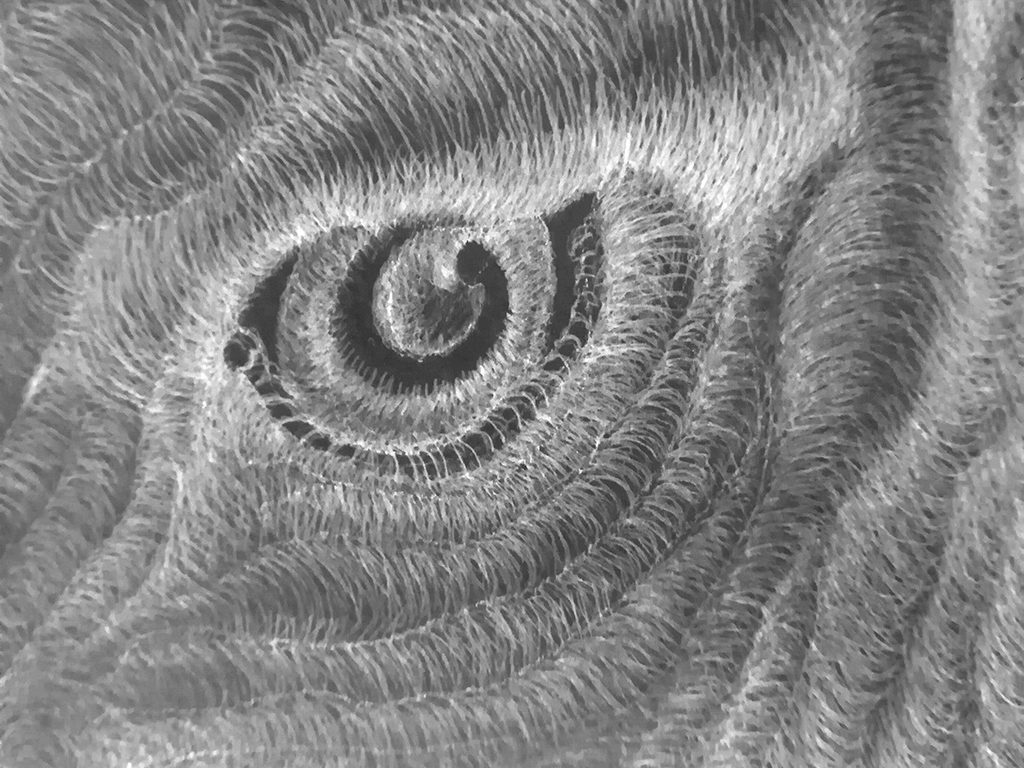Silverpoint is a drawing technique that was used by the great artists of the Renaissance—Leonardo Da Vinci, Raphael, Durer, and Michelangelo who were great masters of this art form. Silverpoint is a process whereby the artist draws on a coated panel or piece of paper with a fine silver rod. By the late sixteenth century, silverpoint as a medium, fell into decline due to the invention of the common lead (known as graphite) pencil. As a result of this, the technique of silver point died.
Examining either Raphael’s or Da Vinci’s silverpoint technique, we would appreciate the exquisite subtlety of line and tone that was possible in the hands of these masters. This is a technique of patience, extreme precision, and lightness of touch. Even the preparation of silverpoint grounds (the material an artist draws on) takes time to produce. During the Renaissance, the ideal grounds used animal bones that were calcified in a hot kiln then mixed with water and glue. The mixture was then applied to the paper in a series of coats over several days. The resulting ground provided the coarse surface required for the use the silverpoint tool.
When a pure piece of silver rod is drawn across the coated paper, minute particles of silver are embedded in the paper ground leaving a grayish line. Over the next few days, these lines are tarnished as the silver reacts with the air in exactly the same way as a piece of silver tableware tarnishes. Silverpoint drawings will continue to mature over a number of years. The tarnished lines then develop into a rich sepia-toned colour. This is not an undesirable quality, in fact it is an essential process in the silverpoint technique, for it is only in this manner that the true subtlety on line and tone become apparent. Silverpoint (or more accurately metal-point) can also be done in copper which tarnishes to a greenish hue as well as gold and platinum though the gold and platinum do not tarnish. Metal-points have to be done using pure metals such as copper, brass ,or bronze as well as lead silverpoint. They are a fine drawing medium — the domain of confident and indeed highly competent draftsmen where skill is needed. Once a line is drawn it cannot be erased.
Silverpoint is a fine art drawing medium and is the domain of confident and indeed highly competent draftsmen skill needed, because once a line is drawn it cannot be erased.
This is not a drawback to the medium, it is a great strength. Silverpoint drawings may take many months to complete. Artist would need and enormous reserves of patience that is to be required and the hand skill precision. If you don’t press hard enough with your silver stylus, you won’t leave a mark; press too hard and you will tear the paper ground. This is the sort of craftsmanship and risk that one would usually associate with a master sculptor working on in marble block.
References
Cennini, C. (1933). The Craftsman’s Handbook (Il Libro Dell’arte). Dover.
Chapman, H. (2015, September). Silver linings. In Apollo (Vol. 182, No. 634, pp. 70-76). Apollo Magazine Ltd..
